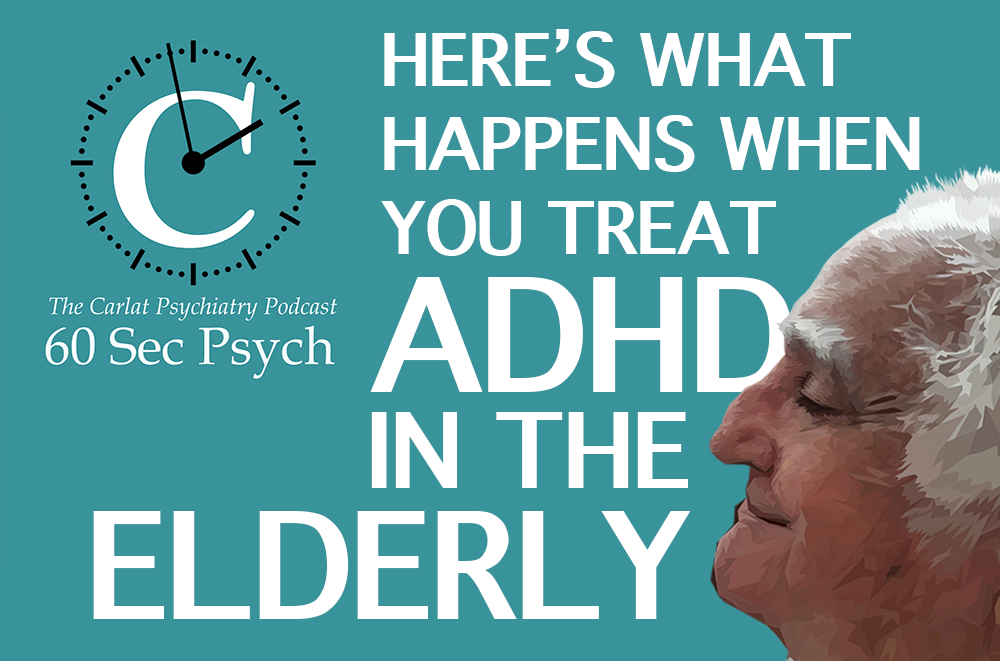Here’s What Happens When You Treat ADHD in the Elderly [60 Sec Psych]
, Volume , Number ,
https://www.thecarlatreport.com/#
In 2004 the FDA approved the first stimulant for adult ADHD: Adderall XR. Now it’s nearly 20 years later, and some of those patients are elderly. Yet there are only a few studies of stimulants in people over age 50 ─ yes that’s the medical definition of elderly these days ─ and they are limited to case reports and patient surveys. [Link]
Published On: 7/15/2020 Duration: 2 minutes, 7 seconds Transcript: In 2004 the FDA approved the first stimulant for adult ADHD: Adderall XR. Now it’s nearly 20 years later, and some of those patients are elderly. Yet there are only a few studies of stimulants in people over age 50 ─ yes that’s the medical definition of elderly these days ─ and they are limited to case reports and patient surveys. So today’s study adds significantly to our knowledge even though its methodology ─ a retrospective chart review of 113 patients with ADHD 55 to 79 ─ isn’t level-1 evidence. Here’s what they found: Bottom line: Stimulants can work in older adults, but they may have more side effects and need lower doses. Although we’re reassured about the cardiovascular risks with these patients, we’d need to see more than 113 patients to understand that. Got feedback? Take the podcast survey.




Leave A Comment
You must be logged in to post a comment.